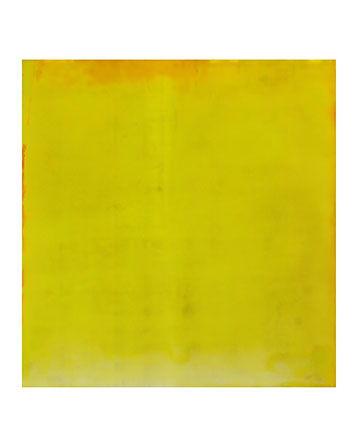
OPINION:
I’d like to thank Ivan Hansen for his letter to the editor.
Hansen’s indignation was palpable. It simmered with outrage. The words sizzled like sausages in a pan. It warmed a frosty winter dawn.
Admittedly it was a short letter. A brisk, no-nonsense, carefully aimed fusillade, the like of which I haven’t read for a very long time in the letter column of this esteemed journal.
“You must be joking!” he began.
That’s guaranteed to grab attention.
“The yellow rectangle pictured in GO (July 25) is supposed to be art”
Ahh, the power of the unassuming question mark. My attention was now firmly fixed.
“According to the measurements provided, the painting is depicted in a sideways position. Call me a Philistine if you like but this painting has as much to do with art as a fire siren has to do with music.”
Let me assure Hansen that the Philistines, despite a bad Biblical press, were, by the standards of the time, a cultured society with a taste for interesting ceramic ware. There’s absolutely no need to apologise.
The pleasure came from reading someone unafraid of sharing a clear, concise, albeit combative view of contemporary art.
Personally, I don’t agree with Hansen’s comments about Leigh Martin’s untitled painting, but I do respect his willingness to expose himself to the hostile fire which could follow.
I also hope that his mind is open to the opposite view. Perhaps a visit to the gallery for a face-to-face encounter with Martin’s painting might change his opinion.
Ultimately, you can never judge art from a newspaper image. A cup of tea with the artist might also be an illuminating experience for both parties, as Prime Minister John Key would testify. Art is a long, winding journey of discovery.
We need these robust, no-holds barred cultural debates accompanied by satisfying detonations of public opinion. But the conversation should also be open-minded. It must never descend into personalised abuse. It must be accompanied by a set of invisible but clearly defined rules of combat, one of which must be a respect for the other side. There’s no room for ad-hominum attacks in the cultural arena.
New Zealand has enjoyed its share of cultural controversies when strong words and even stronger emotions have surfaced.
Ad Feedback
There was the debate over the donkey in the loo when a national newspaper reported with considerable outrage that the et al collective’s contribution to the 2005 Venice Biennale featured an enclosed metal urinal from which emerged the sound of a braying donkey.
The work was actually never intended for Venice, but the shock, horror and indignation which followed engrossed and entertained the country for weeks, proving that facts should never get in the way of a good and satisfying controversy.
There was the 1951 battle of The Pleasure Garden when Christchurch engaged in protracted trench warfare after a coterie of city fathers decided that contemporary art had gone far enough, thank you very much, and what today seems to be a completely inoffensive painting by Frances Hodgkins would never besmirch the pristine walls of the city’s public art gallery.
In retrospect, it seems to have been a storm in a very small teacup, but one which loudly resonates in Christchurch’s psyche, inspiring a recent successful play and a rush of warm nostalgia.
Ivan Hansen is simply maintaining a fine and honourable tradition of expressing an individual’s view of art – and power to his arm. He might not have liked what he saw. We might not like his comments, but he has every right to make them.
– The Press